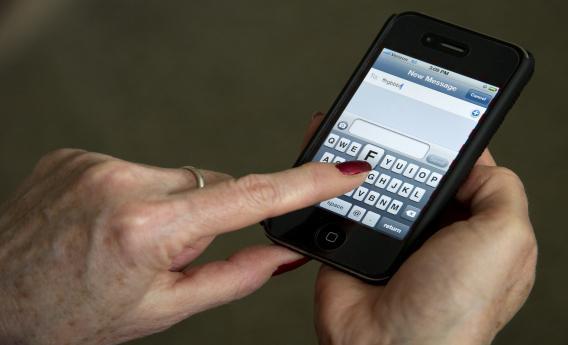New York Times technology columnist David Pogue lost his iPhone on an Amtrak train earlier this week but recovered it yesterday after police found it in the backyard of a house in suburban Maryland. Pogue used Find My iPhone, an application that uses GPS signaling to allow users to view the location of their iPhone from a computer or other device, to pinpoint the location of his phone. He then tweeted the location to 1.4 million Twitter followers, who made Pogue’s stolen phone a viral phenomenon. For people without 1.4 million Twitter followers, are there good ways to recover a lost or stolen cellphone?
Yes, but most require taking steps ahead of time. Having some sort of mobile phone-recovery application, like Find My iPhone, installed is a good first step. Although this type of application won’t work if the phone is turned off or the battery is dead, it will tell you where your phone is if it’s powered on. It will also let you cause the phone to emit a loud noise for a couple of minutes, to help you find the phone if you are in earshot but not sure exactly where it is. Finally, an app like this can let you erase all of the phone’s data remotely, in case you resign yourself to the likelihood that the phone is gone forever and want to protect your private data. (These apps are available only for smartphones with GPS capabilities—owners of older models are out of luck.)
Another way to identify a thief is to hope that he or she will enter identifying information into the phone. If your carrier stores phone data on a remote network, you’ll be able to see texts and emails sent and photos taken from your phone, which might give you enough information to be able to track down a thief and ask for your phone back or offer a reward in exchange for it. If the thief refuses, you can try to alert the masses just as Pogue did, even if you’re not a famous writer. As Clay Shirky recounts in Here Comes Everybody, a woman recovered her cellphone after a friend publicly shamed the phone’s thief (whose pictures and email address they discovered via T-Mobile servers) on Digg.
You can also try filing a police report, on which you’ll be asked to include basic information like the date, time, and location of the theft and any identifying characteristics of the phone, including serial numbers (which are a good idea to record somewhere). However, unless you have a phone-tracking app installed to let you see the location of the phone, it’s unlikely the police will be able to do much to help you—and even if you do know the location of the phone, the police may not be willing to devote resources to recovering it. (Pogue says that since his story went viral, he’s “heard from many who could not persuade the police to act” to recover stolen phones.)
However, sometimes having filed a police report is a prerequisite for filing an insurance claim if you have cellphone insurance, which is an optional feature of many cellphone plans. Carriers can also suspend service to your stolen phone so that a thief won’t be able to rack up charges using your number.
CTIA, the International Association for the Wireless Telecommunications Industry, has recently pledged to compile an industry-wide database of stolen smartphone identifying numbers that will prevent stolen phones from being reactivated on any network—effectively rendering them useless to thieves. If the database is implemented as planned in October 2012, cellphones might become much less tempting to thieves than they are now.
Got a question about today’s news? Ask the Explainer.
